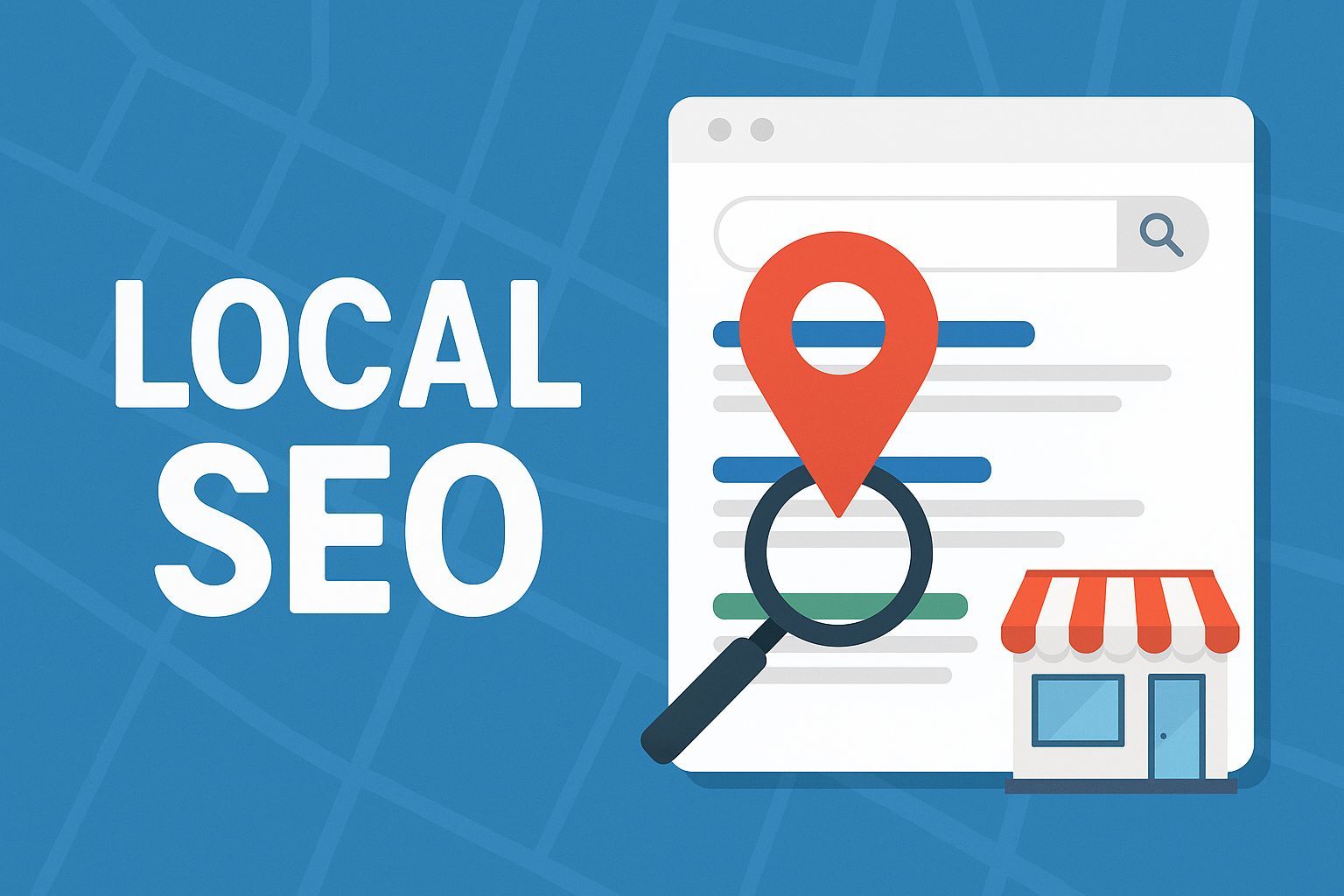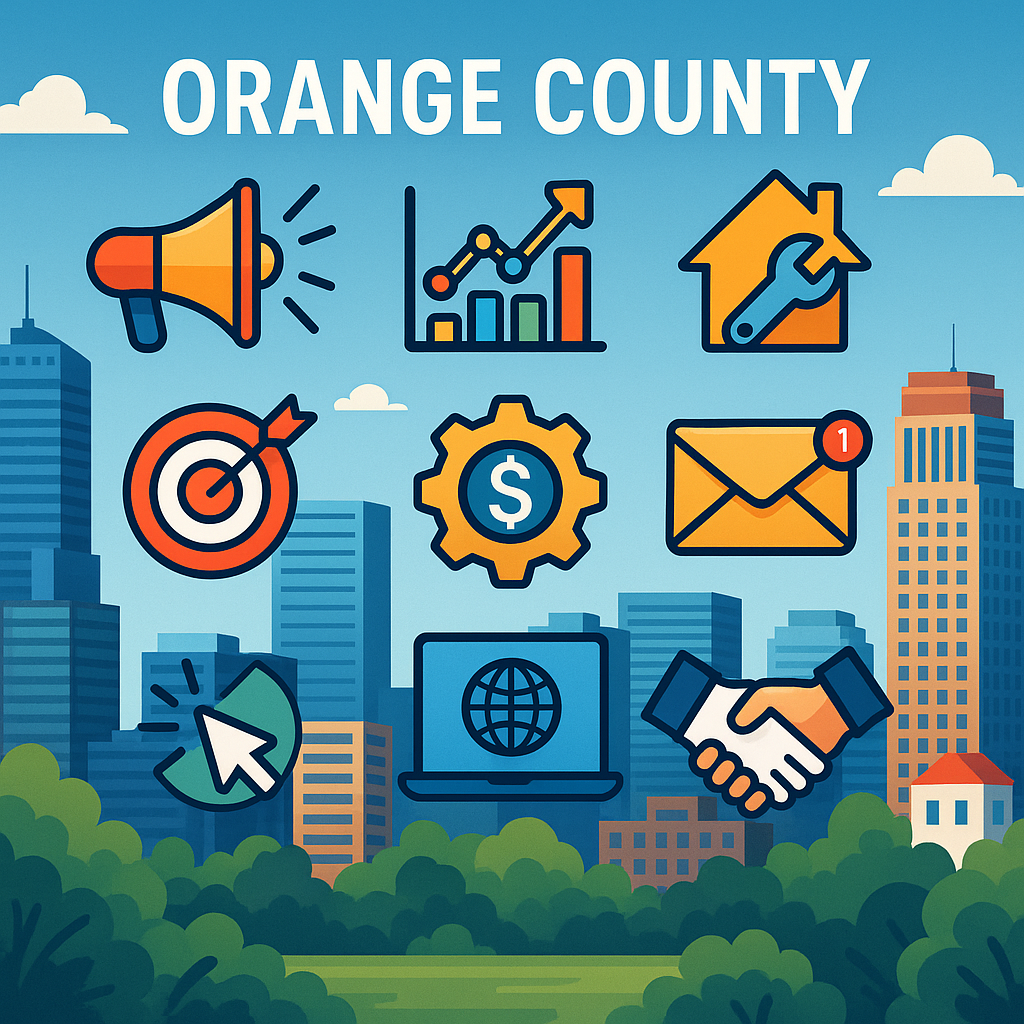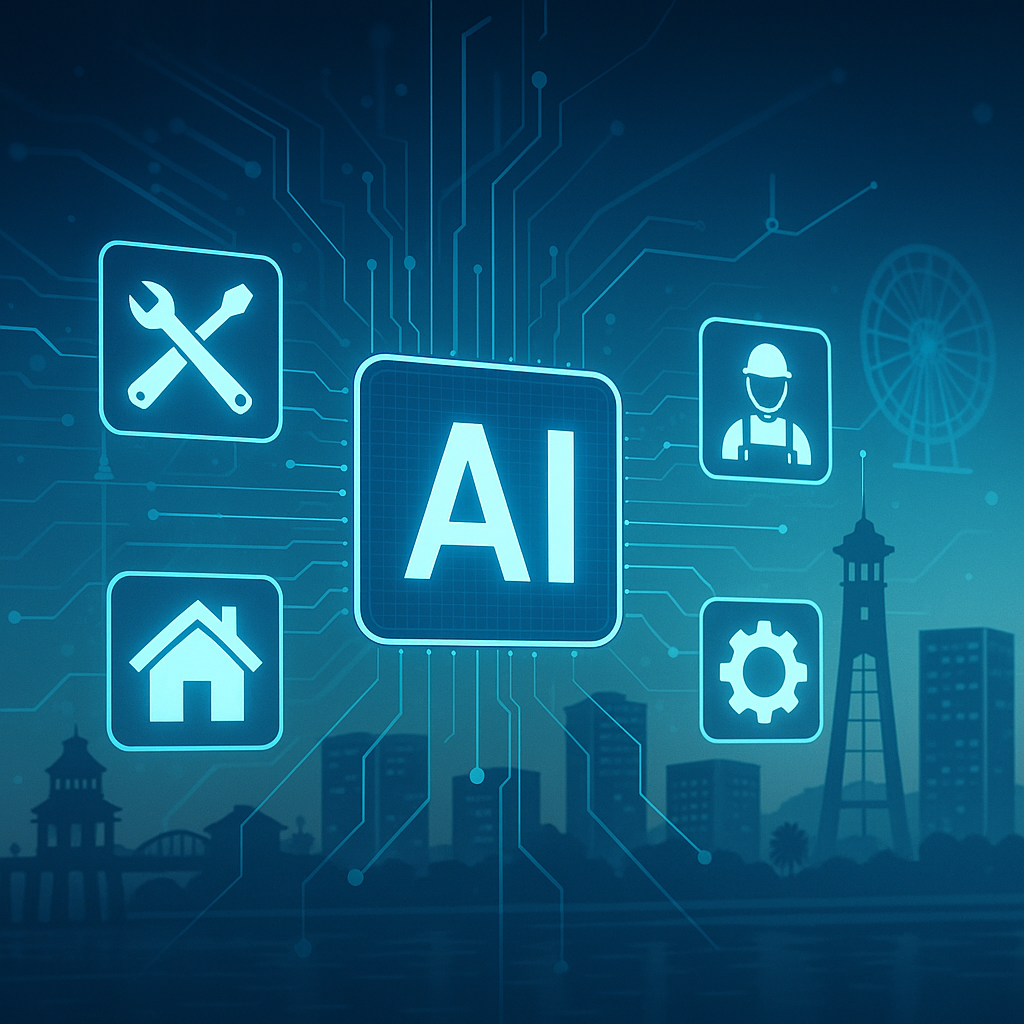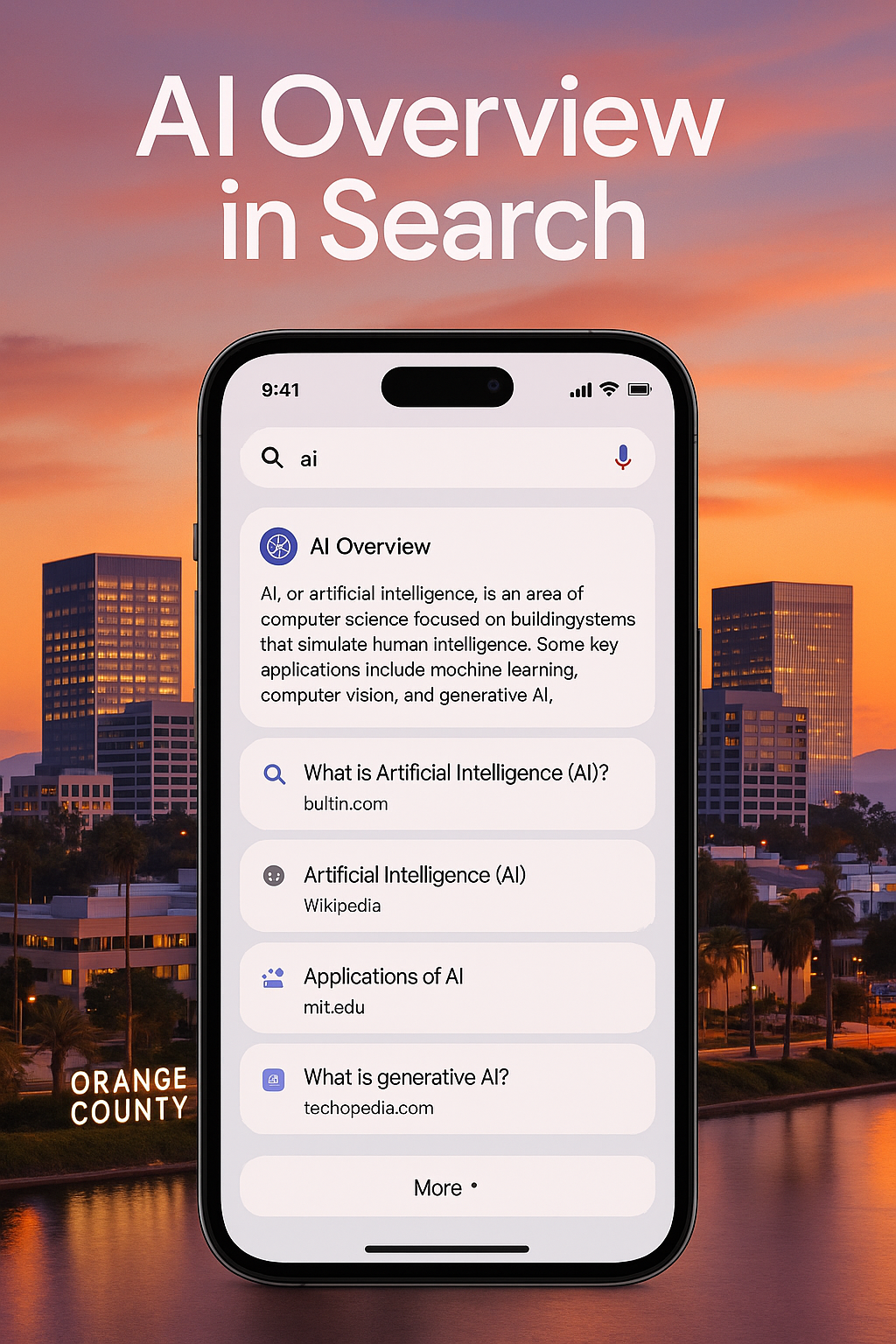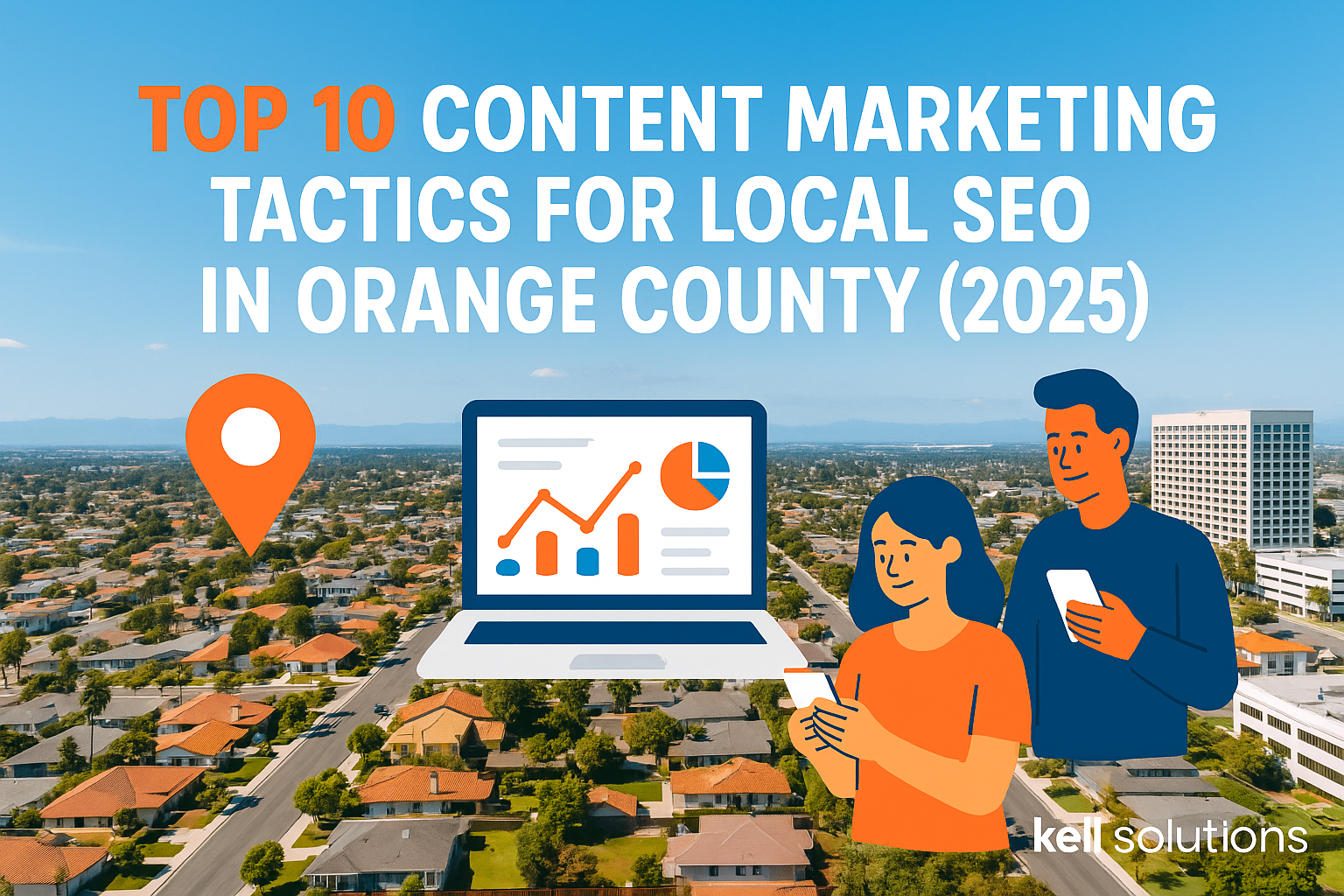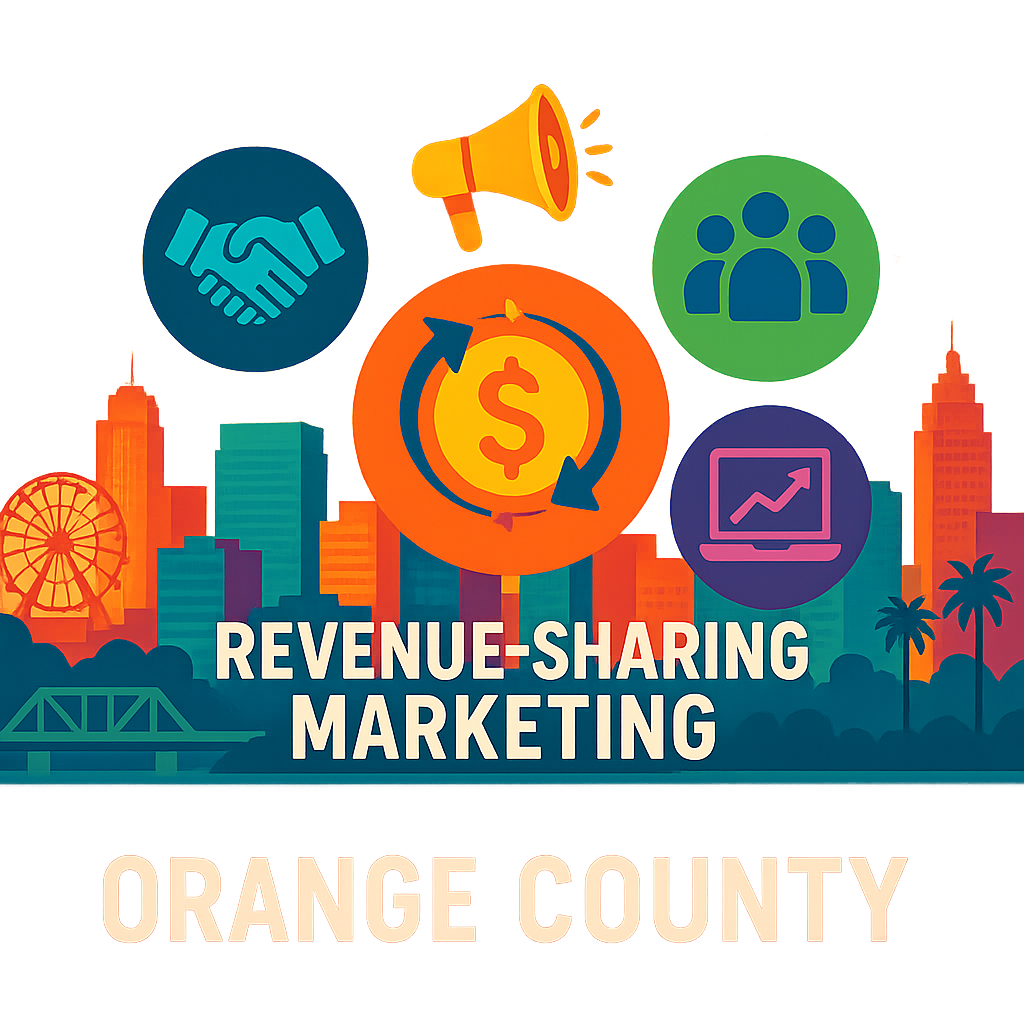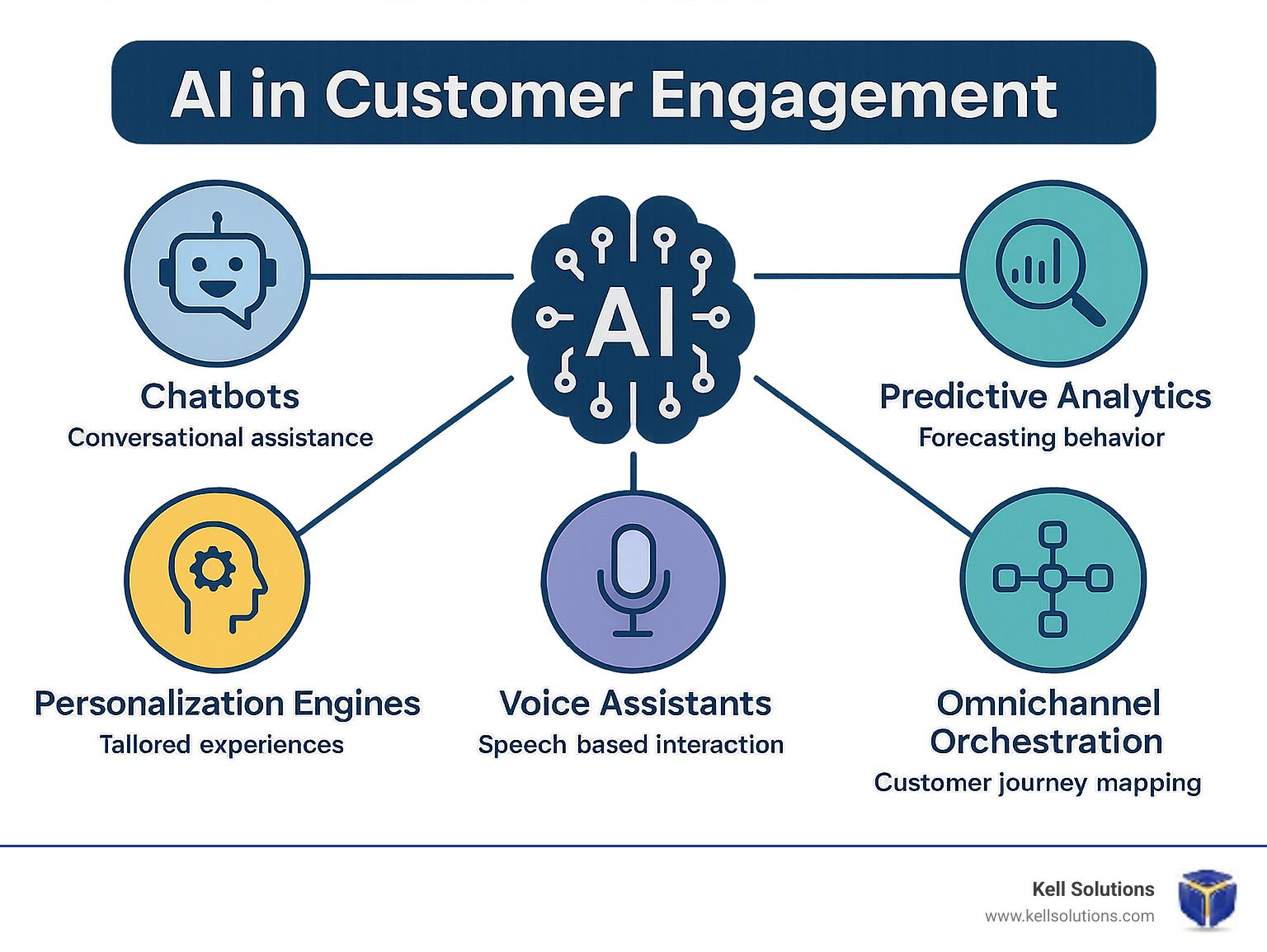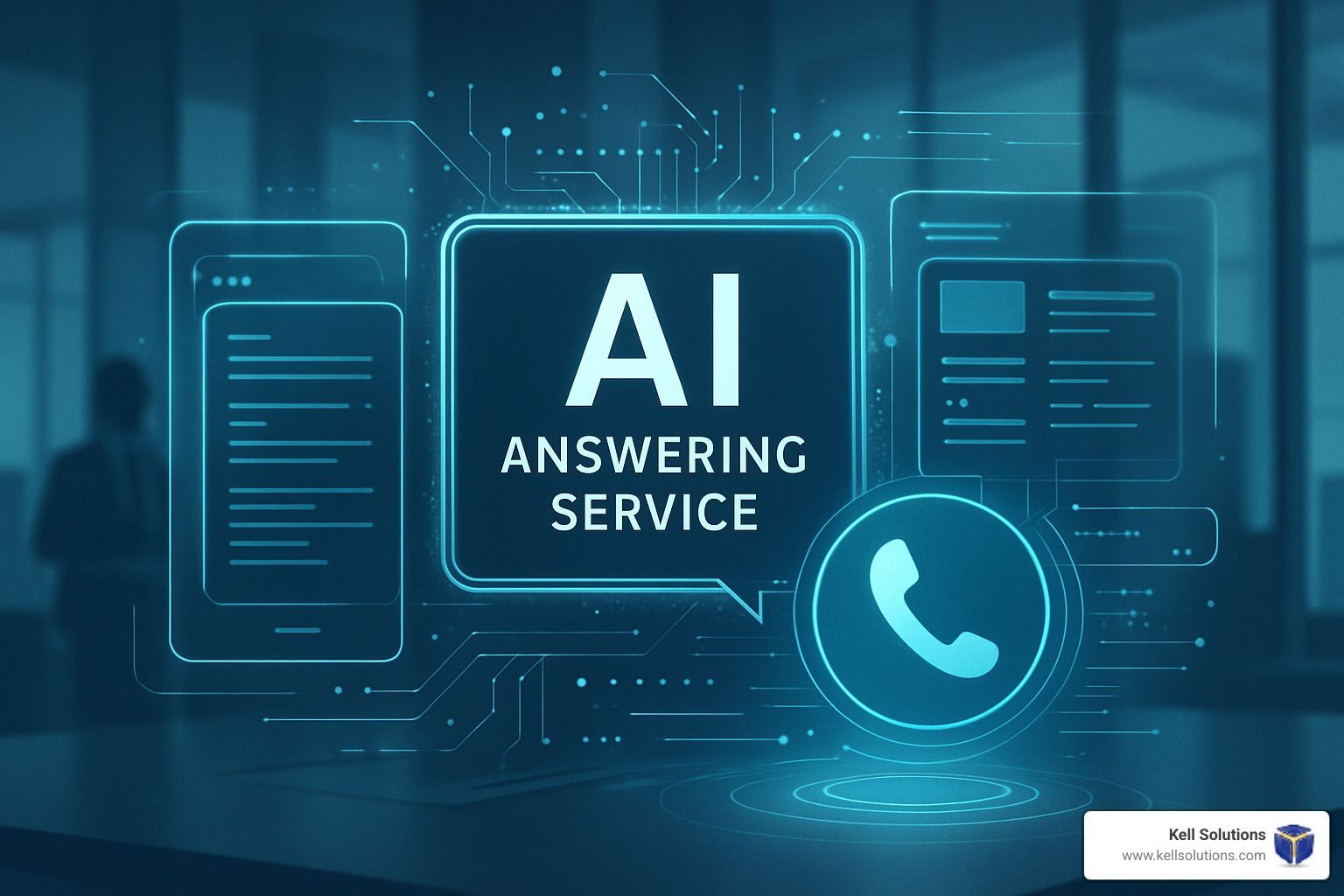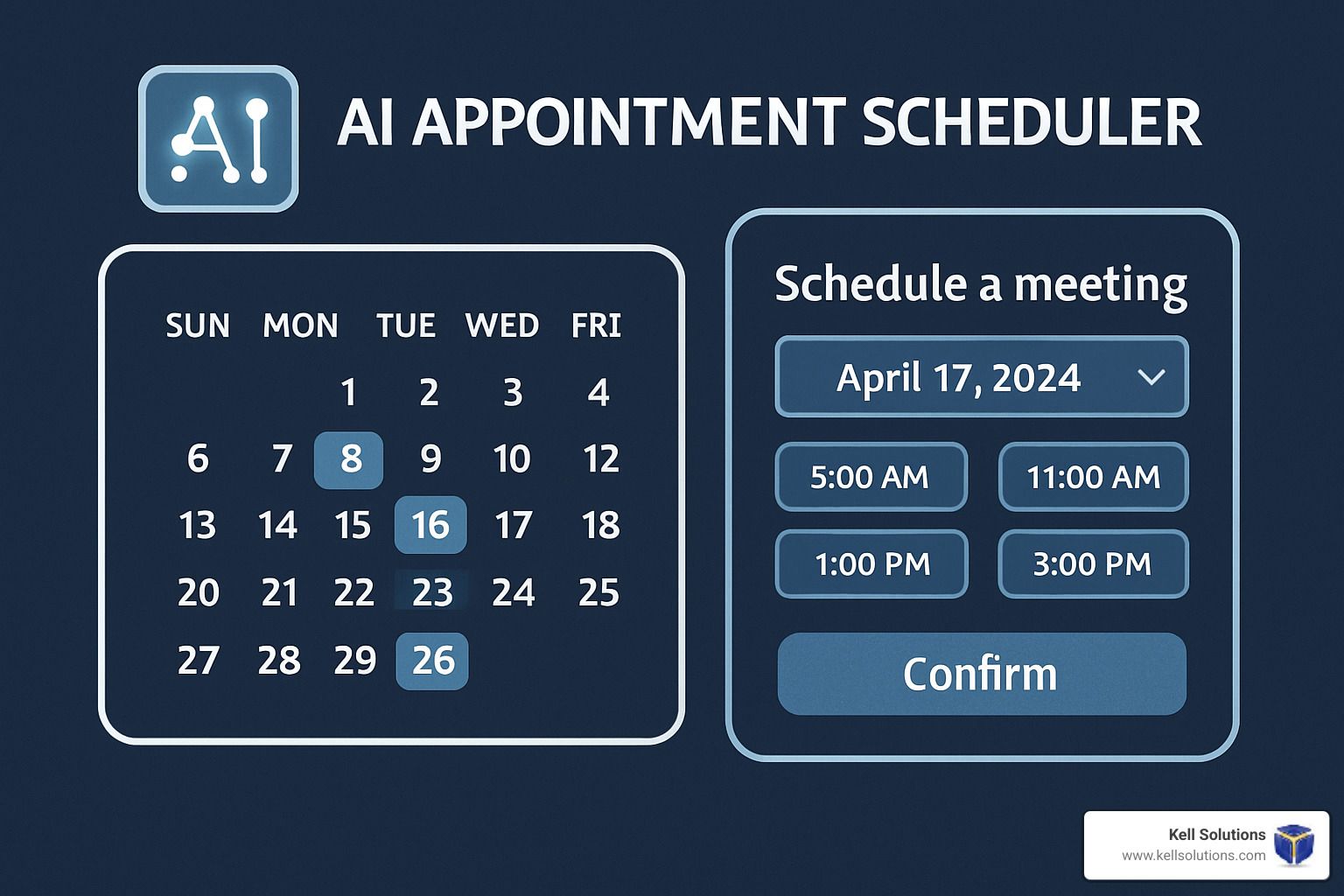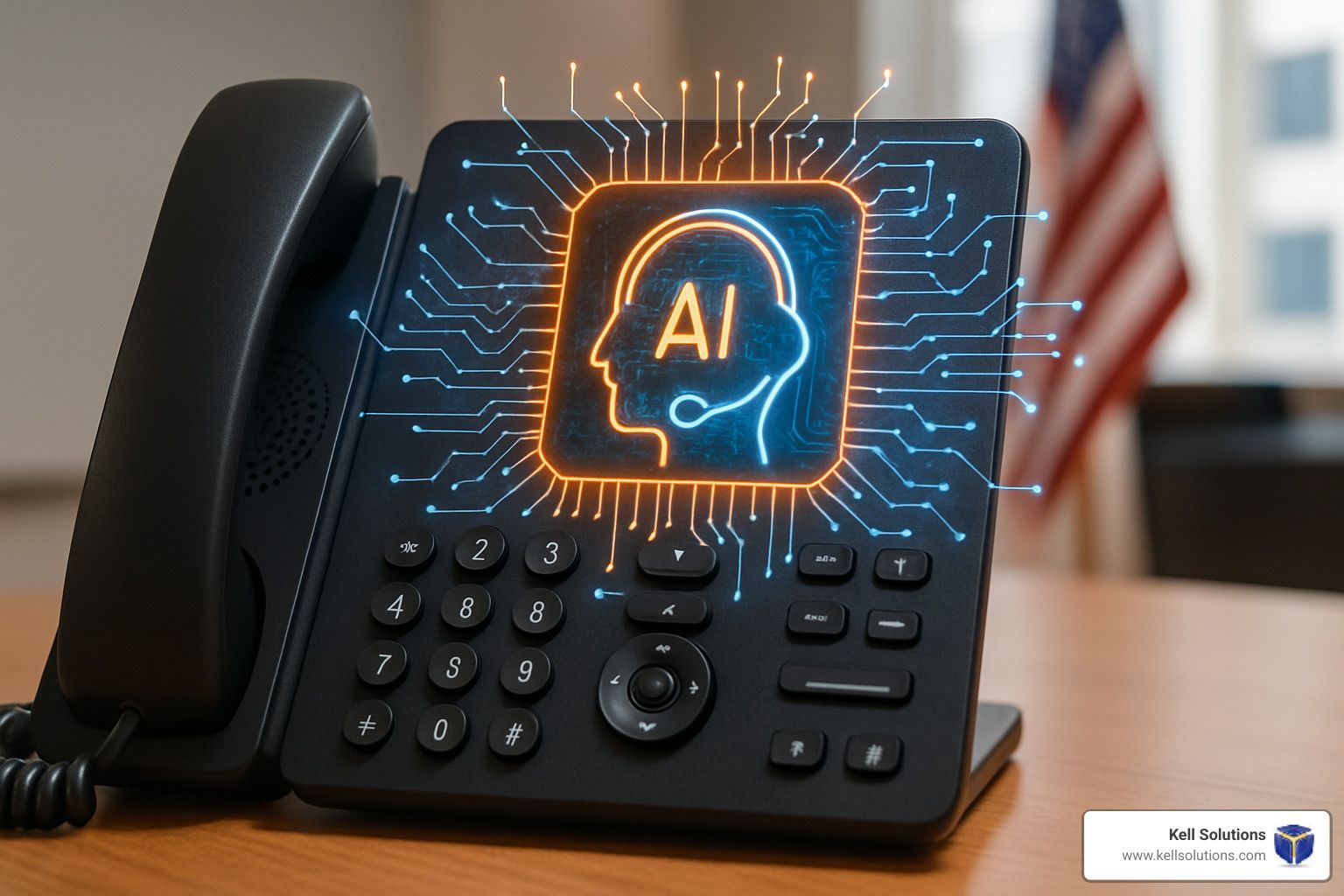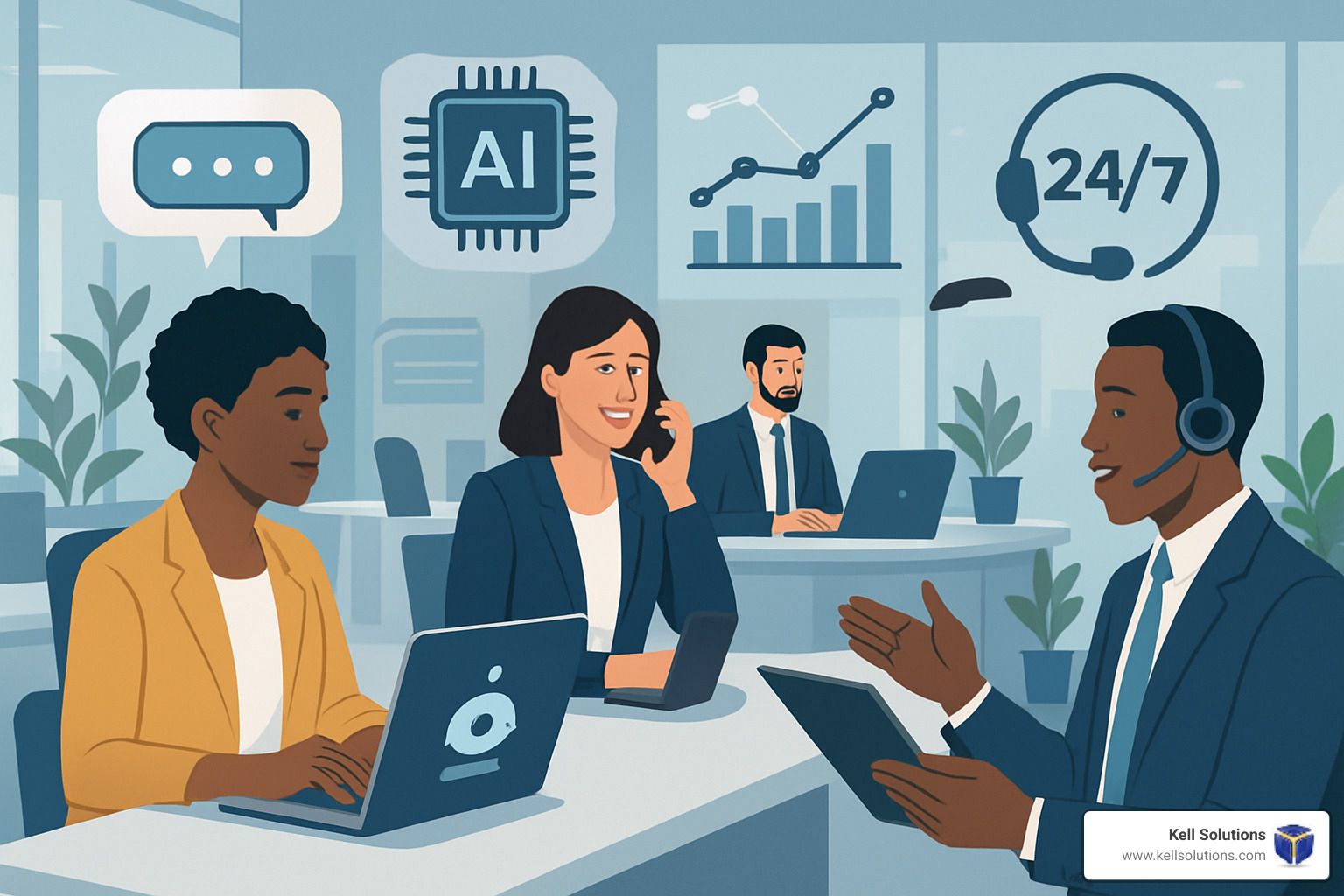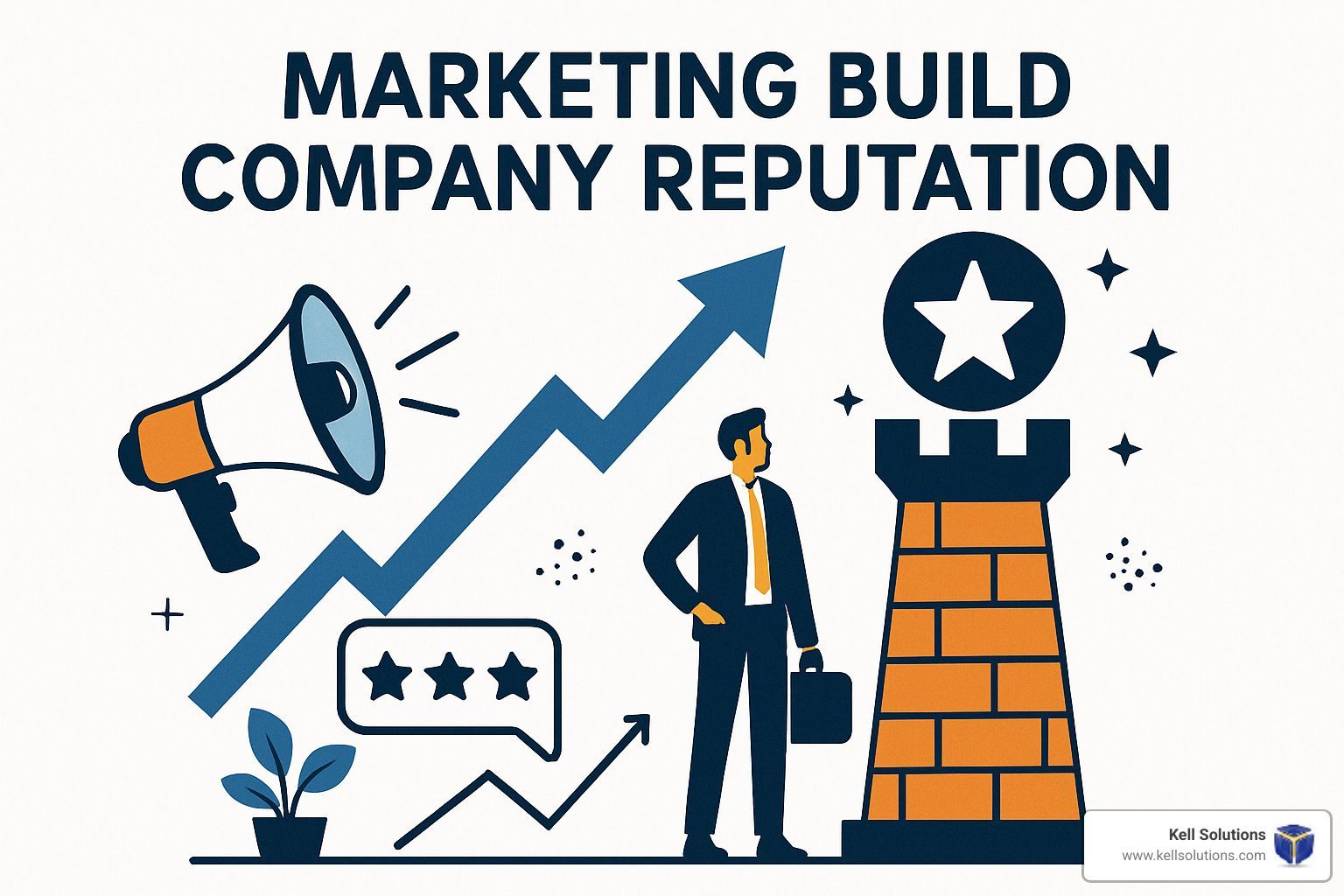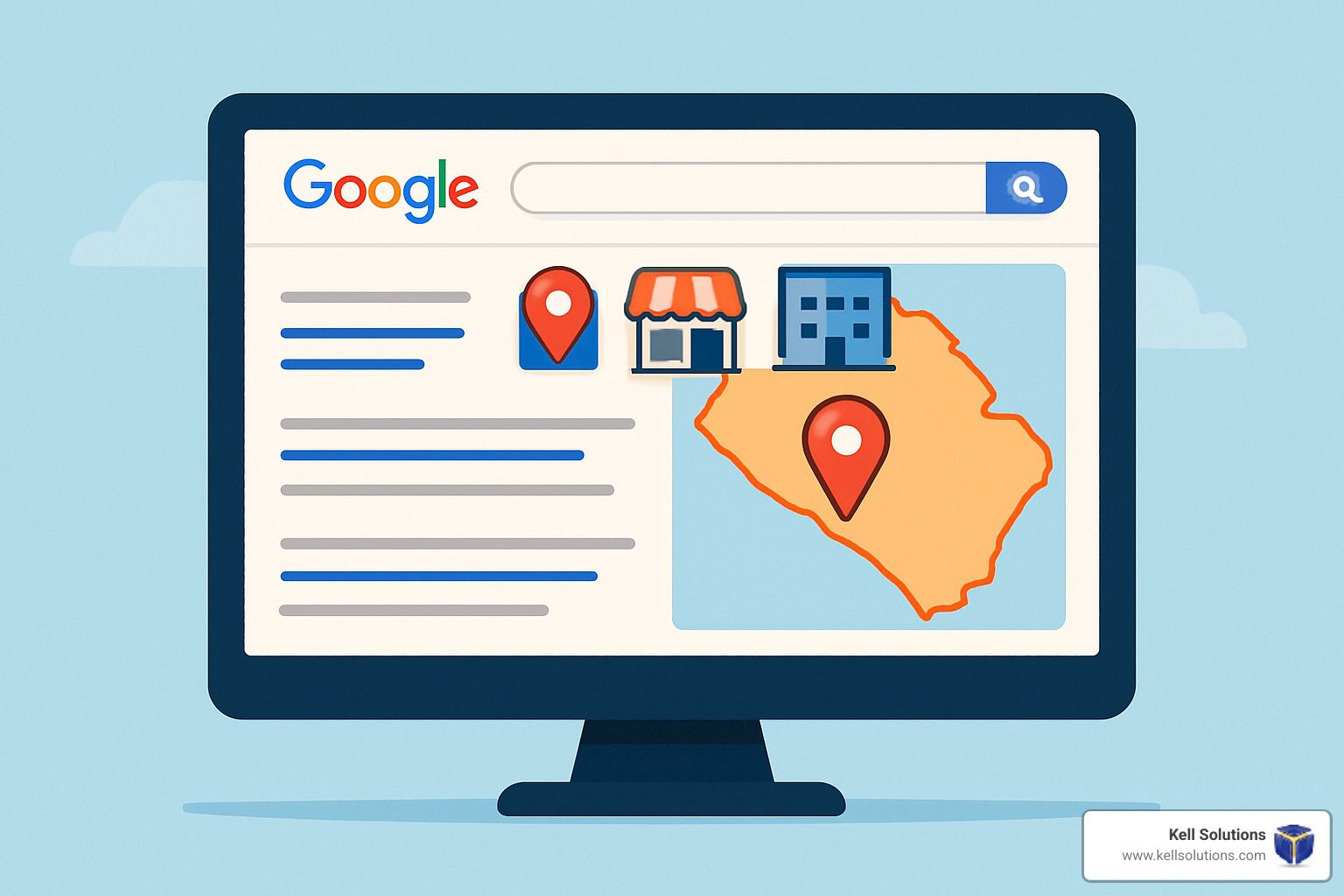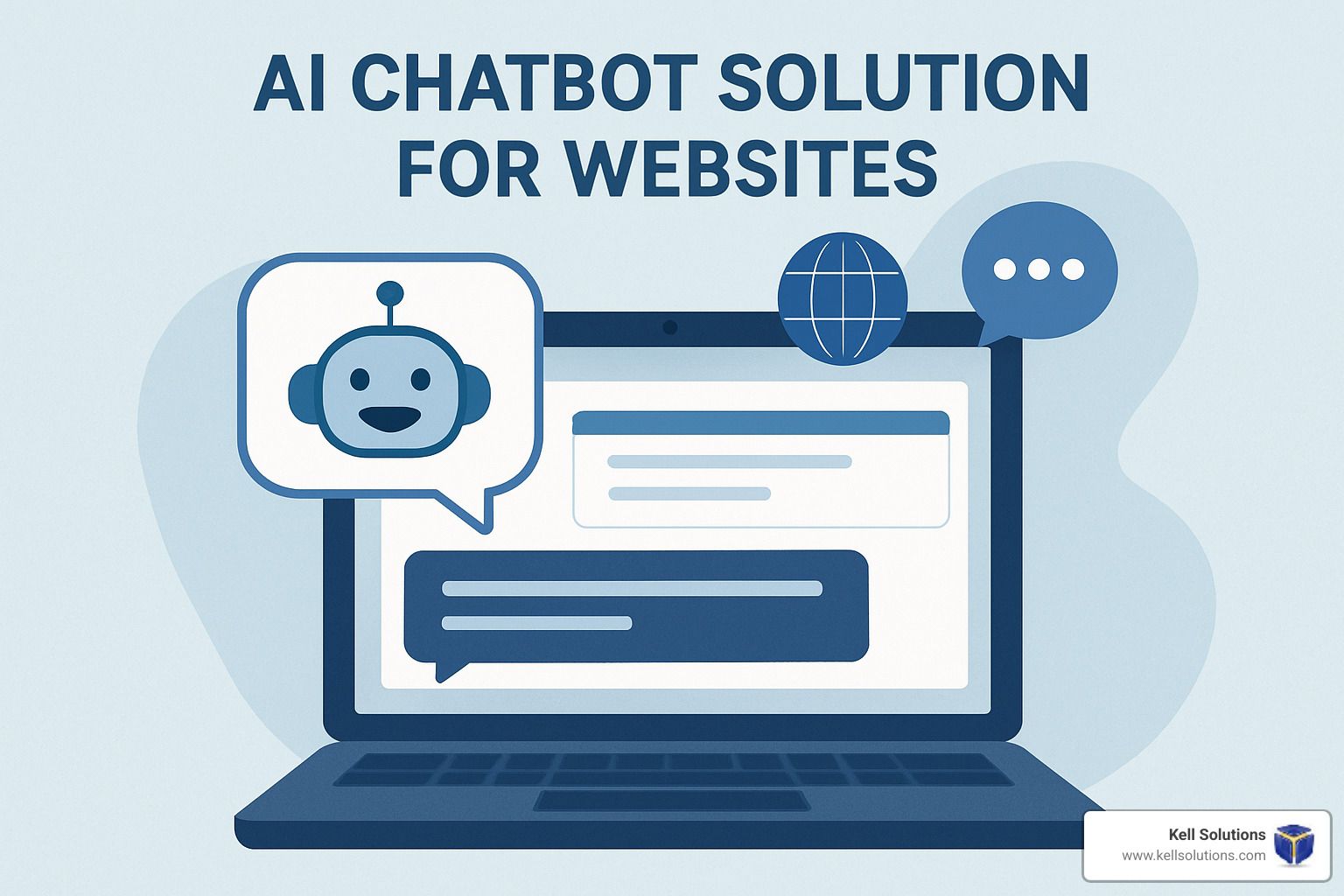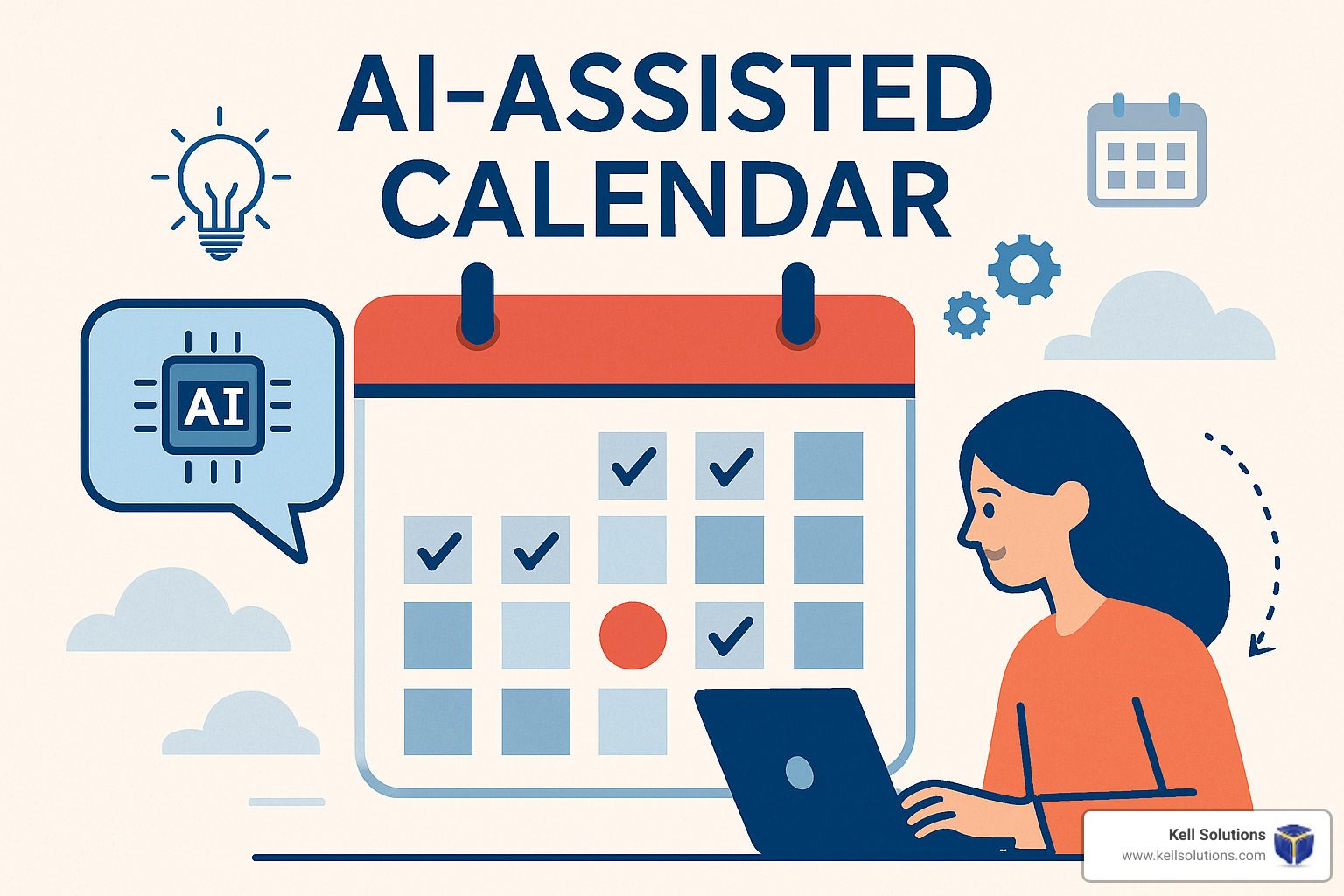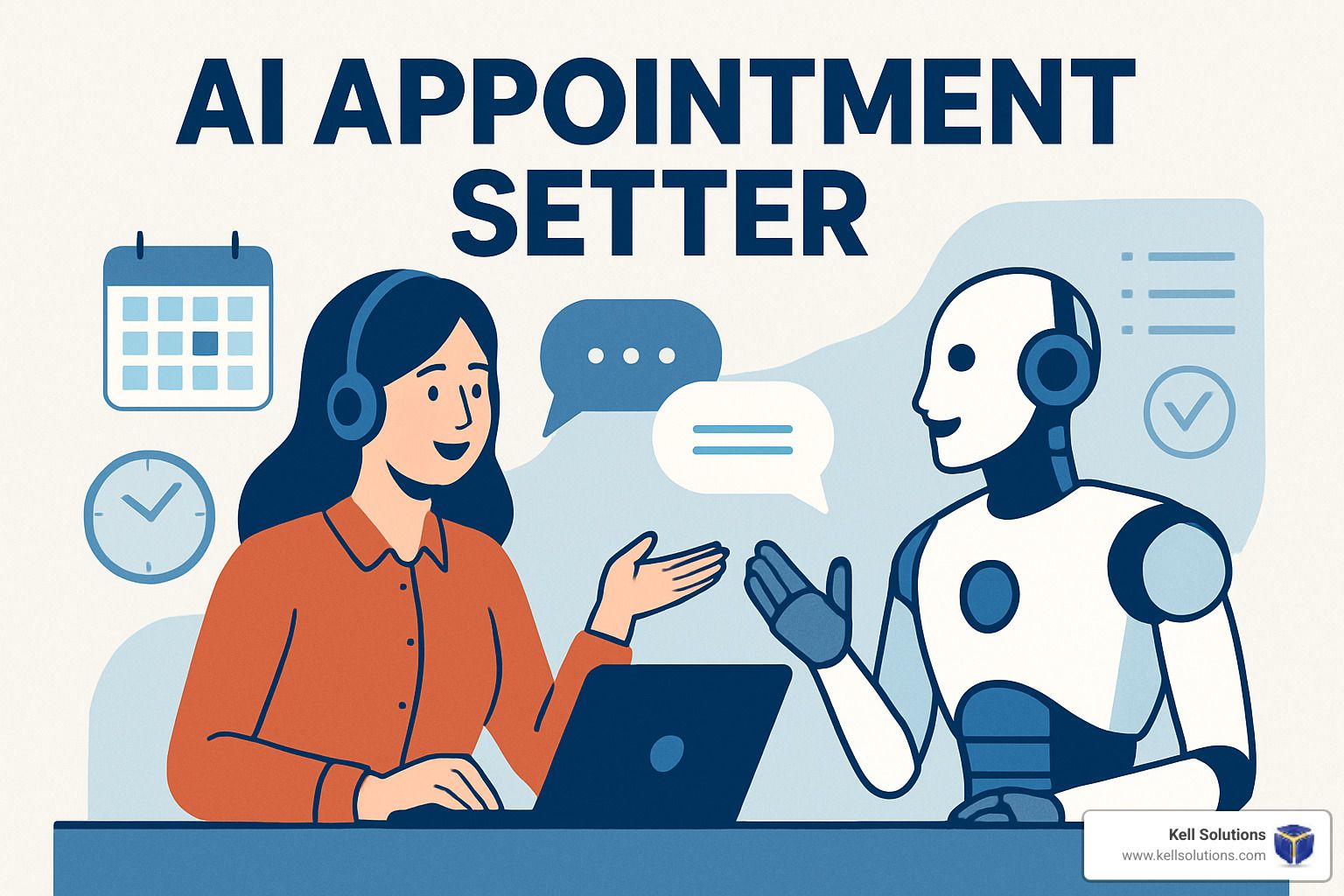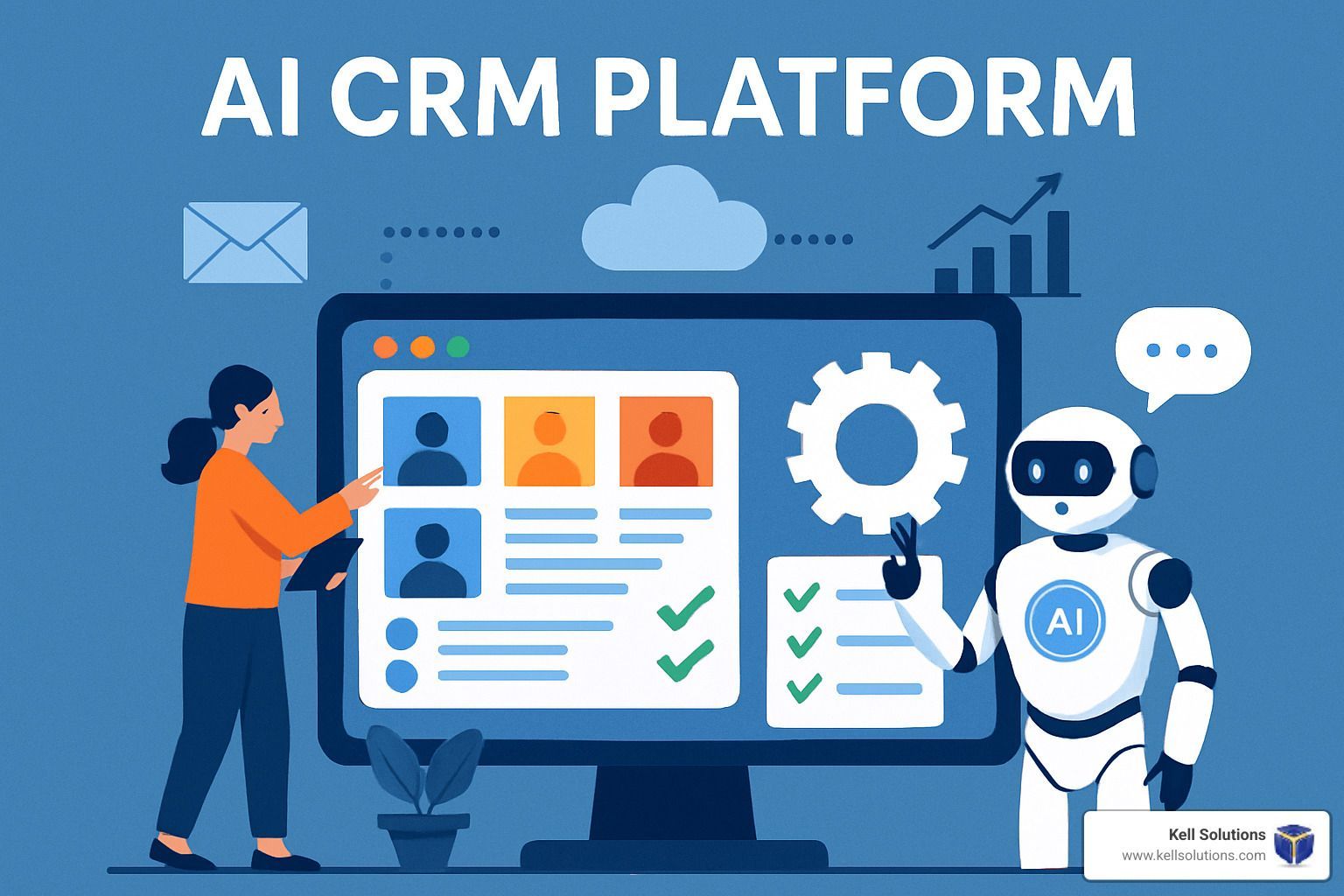Speak Easy with AI: Top AI-Powered Voice Agent Solutions
Why AI-Powered Voice Agents Are Essential for Modern Business
AI-powered voice agents are intelligent systems that use natural language processing, speech recognition, and machine learning to conduct real-time spoken conversations with customers, automatically handling inquiries, booking appointments, and performing tasks without human intervention.
Quick Answer for Business Owners:
- What they do: Answer calls 24/7, book appointments, qualify leads, and provide customer support
- Key benefits: Never miss calls, reduce staffing costs, improve customer satisfaction
- Best for: Small businesses, home services, healthcare, restaurants, and professional services
- Cost impact: Can automate 50-70% of routine calls while reducing response time to zero
- Setup time: Most solutions deploy in minutes to hours, not weeks
The numbers tell a compelling story. Research shows that AI-powered voice agents can achieve 99.7% intent recognition accuracy and reduce average handling time by 68%. For small businesses drowning in missed calls and after-hours inquiries, this technology represents a game-changing solution.
Consider this reality: "81% of service professionals say the phone is a preferred channel for complex issues," yet most small businesses can't afford 24/7 staffing. AI-powered voice agents bridge this gap by delivering human-like conversations that never sleep, never take breaks, and never miss a call.
The market is responding rapidly. The global AI voice agents market is projected to grow from $2.4 billion in 2024 to $47.5 billion by 2034 - a staggering 34.8% annual growth rate. This isn't just hype; it's businesses finding that voice AI can handle everything from restaurant reservations to emergency service dispatch with remarkable accuracy.
I'm Gregg Kell, founder of Kell Web Solutions, and I've spent over 25 years helping small businesses leverage technology for growth, including developing AI-powered voice agents through VoiceGenie AI. This comprehensive roundup will help you steer the rapidly evolving landscape of voice AI solutions and find the right fit for your business.

The Rise of AI-Powered Voice Agents
The story of AI-powered voice agents is truly fascinating - and it's happening faster than most business owners realize. What began as those frustrating "press 1 for sales, press 2 for support" phone systems has evolved into something that would have seemed like science fiction just a few years ago.
Think about it: we've gone from basic speech recognition that could barely understand "yes" or "no" to sophisticated conversational AI that can chat naturally about complex topics, pick up on emotional cues, and even handle interruptions gracefully. The change has been remarkable.
The real breakthrough came with advances in transformer architectures and generative AI technology. Modern AI-powered voice agents don't just convert speech to text and back again - they process conversations end-to-end using neural networks that preserve the natural flow of human communication. This means they can detect when someone sounds frustrated, respond to tone changes, and maintain context throughout long conversations.
Scientific research on natural language processing shows these systems now understand not just the words customers say, but the emotions behind them. That's a game-changer for businesses trying to provide genuine customer care.
Here's what really impresses me about today's voice agents: they're genuinely multilingual powerhouses. We're talking about systems that can seamlessly switch between over 100 languages and dialects, making them perfect for diverse markets. They also perform real-time sentiment analysis, so they know when to escalate a call or when to offer additional help.
But perhaps the most practical benefit is the 24/7 availability. While your human staff needs sleep, coffee breaks, and weekends off, AI-powered voice agents are always on duty. They're capturing leads during those late-night hours when people are browsing online, handling emergency calls at 3 AM, and ensuring no customer ever gets a busy signal.
One healthcare provider I know about achieved incredible results - a 2.5x increase in qualified appointments and a 30% reduction in no-show rates - simply because every single call was answered instantly. No more voicemail tag or missed opportunities.
The speed improvements are equally impressive. Modern voice AI platforms achieve response times under 500 milliseconds- that's faster than most humans can process complex questions. This creates conversations that feel natural and engaging rather than stilted or robotic.
The market is responding with enthusiasm. We're seeing a projected growth from $2.4 billion in 2024 to $47.5 billion by 2034 - that's a 34.8% annual growth rate. These aren't just impressive numbers; they represent thousands of businesses finding that voice AI can handle everything from restaurant reservations to emergency dispatch with remarkable accuracy and consistency.
How AI Voice Agent Solutions Differ: Must-Have Features & Capabilities
Not all AI-powered voice agents are created equal. The difference between a frustrating automated system and a delightful customer experience comes down to sophisticated capabilities that make conversations feel genuinely human.
Think about your last interaction with a clunky phone system. You probably found yourself shouting "REPRESENTATIVE!" at a robot that couldn't understand your simple request. Modern AI-powered voice agents have evolved far beyond those painful experiences.
Natural Language Understanding accuracy forms the foundation of effective voice AI. The best systems achieve 99.7% intent recognition, which means they understand what customers actually want - even when they ramble, use slang, or phrase things in unexpected ways. This isn't just converting speech to text; it's true comprehension of meaning and context.
Real-time speech processing creates the magic of natural conversation flow. Advanced platforms process speech as customers speak, not after they finish talking. This enables natural interruptions, overlapping speech, and responses that feel conversational rather than robotic. No more awkward pauses while the system "thinks."
The lifelike text-to-speech capabilities available today would amaze you. Neural voices now convey genuine emotion, adjust tone based on context, and sound remarkably human. Some platforms offer over 50 voice styles and accents, letting businesses match their brand personality perfectly. Your voice agent can sound warm and welcoming for a spa or professional and authoritative for a law firm.
Sentiment analysis and emotional awareness represent the cutting edge of voice AI. These systems detect frustration, excitement, or confusion in real-time, then adjust their responses accordingly. An upset customer gets immediately routed to a human agent, while an excited prospect receives enthusiastic engagement about their project.
Multilingual support opens incredible opportunities for businesses serving diverse communities. Leading platforms support over 100 languages with native-level fluency, eliminating language barriers that might otherwise cost you customers.
Security isn't negotiable when handling customer conversations. Look for SOC 2 Type II certification for guaranteed top-tier data safety, HIPAA compliance for healthcare applications, and enterprise-grade encryption. These certifications ensure customer data remains protected throughout every interaction.
Integration capabilities determine how smoothly voice agents work with your existing business systems. The best solutions offer seamless connections to CRM systems, calendar platforms, and business applications - often with pre-built integrations that work right out of the box.
Ultra-low latency makes or breaks the conversation experience. Target systems achieving under 500 milliseconds end-to-end response time. This threshold creates conversations that feel truly natural rather than stilted.
| Feature | Traditional IVR | AI Voice Agents |
|---|---|---|
| Response Style | Menu-based navigation | Natural conversation |
| Understanding | Keyword matching | Intent recognition |
| Flexibility | Rigid scripts | Adaptive responses |
| Learning | Static programming | Continuous improvement |
| Emotional Intelligence | None | Sentiment analysis |
| Language Support | Limited | 100+ languages |
| Setup Time | Weeks to months | Minutes to hours |
The technology stack powering modern AI-powered voice agents represents years of advancement in machine learning, natural language processing, and speech synthesis. When these capabilities work together seamlessly, the result is customer interactions that feel personal, helpful, and genuinely engaging.
Top Categories of AI-Powered Voice Agent Solutions
The AI-powered voice agents landscape offers solutions for every business size and technical requirement. We've evaluated platforms based on ease of use, scalability, cost-effectiveness, and compliance capabilities to help you find the perfect fit.
Our evaluation criteria focus on real-world business impact: How quickly can you deploy? How well does it integrate with existing systems? What's the total cost of ownership? How does it handle peak call volumes? These practical considerations matter more than flashy features.
Plug-and-Play Phone Assistants (AI-Powered Voice Agents for SMBs)
For small and medium businesses, plug-and-play solutions offer the fastest path to AI-powered voice agents without technical complexity. These platforms are designed for business owners who want results in minutes, not months.
The standout feature of SMB-focused voice agents is their 24/7 availability. Unlike human receptionists, these AI assistants never miss calls, take sick days, or need vacation coverage. They answer every call with consistent professionalism, whether it's 2 PM or 2 AM.
Lead capture capabilities transform missed opportunities into revenue. When prospects call after hours, AI agents collect contact information, understand their needs, and schedule follow-up appointments. One language AI platform achieved 24% more answered calls and 15% lead reactivation using this approach.
Appointment booking integration eliminates phone tag. Customers can schedule, reschedule, or cancel appointments through natural conversation. The AI agent checks calendar availability in real-time and sends confirmation texts - all without human intervention.
ROI calculations show impressive returns. Businesses typically see 5x reduction in time spent on phone bookings and cost savings that quickly offset the investment. A security company automated 50% of their calls, freeing staff for revenue-generating activities.
The beauty of these solutions lies in their simplicity. Most offer industry-specific templates - whether you're a dental practice, plumbing contractor, or restaurant - that work immediately with minimal customization. AI Voice Bots for Small Businesses: Big Benefits and Real-World Impact explores these applications in detail.
No-Code Builders & Templates
No-code platforms democratize AI-powered voice agents by enabling non-technical users to create sophisticated conversational experiences through visual interfaces. These solutions bridge the gap between plug-and-play simplicity and custom development flexibility.
Drag-and-drop workflow builders let business owners design conversation flows without programming knowledge. You can map out how the AI should handle different customer scenarios, create branching logic for complex inquiries, and define escalation paths to human agents.
Quick launch capabilities mean you can go from concept to deployment in hours. Pre-built templates for common industries provide starting points that you customize to match your specific business needs. Whether you're handling insurance claims or restaurant reservations, there's likely a template that fits.
Knowledge sync features keep your AI agent current with your business. Upload your website content, FAQ documents, or product catalogs, and the system automatically updates the agent's knowledge base. This ensures accurate, up-to-date responses without manual intervention.
Analytics dashboards provide insights into customer interactions. Track call volume patterns, identify common questions, and spot opportunities for process improvement. Some platforms offer over 50 analytics dashboards for comprehensive performance monitoring.
The collaborative nature of these platforms shines in team environments. Multiple team members can contribute to agent development, test conversation flows, and refine responses based on real customer feedback. Inside the Voice AI Platform for Customer Engagement provides deeper insights into these collaborative features.
Developer APIs & SDK Toolkits
For businesses with technical teams or unique requirements, developer-focused platforms offer maximum flexibility and control over AI-powered voice agents. These solutions provide the building blocks for custom voice applications.
Low-latency streaming capabilities enable real-time voice processing with response times under 300 milliseconds. This creates conversational experiences that feel natural and responsive, crucial for customer-facing applications.
Function-calling features allow voice agents to interact with any system or database. Whether checking inventory, processing payments, or updating customer records, AI agents can trigger real-world actions through API calls.
Bring-your-own-LLM (Language Learning Model) options provide flexibility in AI model selection. Teams can choose between different AI providers based on cost, performance, or specific capabilities, avoiding vendor lock-in.
Open-source components enable customization at every level. Developers can modify speech recognition, natural language processing, or voice synthesis components to meet specific requirements.
Scalability to handle millions of concurrent calls makes these platforms suitable for enterprise applications. The underlying infrastructure can automatically scale based on demand, ensuring consistent performance during peak periods.
Enterprise Contact Center Platforms
Large organizations require AI-powered voice agents that integrate seamlessly with existing contact center infrastructure while providing enterprise-grade reliability and compliance.
Intent recognition accuracy of 99%+ ensures customer inquiries are understood and routed correctly. Advanced natural language processing handles complex, multi-part questions and maintains context throughout lengthy conversations.
Proactive outbound capabilities enable AI agents to initiate customer contact for follow-ups, surveys, or promotional campaigns. This extends voice AI beyond reactive customer service to proactive customer engagement.
Omnichannel integration connects voice interactions with chat, email, and social media touchpoints. Customers can start conversations on one channel and seamlessly continue on another while maintaining full context.
Deep analytics provide insights into customer sentiment, agent performance, and operational efficiency. Real-time dashboards help supervisors monitor call quality and identify training opportunities.
Agent assist features support human representatives with real-time suggestions, knowledge base lookups, and conversation summaries. This hybrid approach combines AI efficiency with human empathy for complex situations.
Compliance controls ensure adherence to industry regulations like GDPR, CCPA, and sector-specific requirements. Detailed audit trails and data governance features satisfy enterprise security requirements.
Vertical & Industry-Specific AI-Powered Voice Agents
Industry-specific solutions address unique requirements and regulations that generic platforms cannot handle effectively. These specialized AI-powered voice agents understand industry terminology, workflows, and compliance needs.
Healthcare HIPAA compliance is built-in for medical practices and healthcare organizations. These systems handle patient data according to strict privacy requirements while enabling appointment scheduling, prescription refills, and basic medical inquiries.
Automotive in-car assistants represent a growing category. These voice agents integrate with vehicle systems to provide navigation assistance, climate control, and entertainment while maintaining driver safety through hands-free operation.
Quick-service restaurant (QSR) drive-thru solutions optimize food ordering experiences. AI agents understand menu items, handle modifications and substitutions, and process payments while maintaining accuracy that matches or exceeds human order-takers.
Home services applications cater to contractors, plumbers, electricians, and other field service businesses. These agents understand service terminology, can schedule emergency calls, and integrate with dispatch systems for efficient routing. AI-Powered Voice Agents for Home Service Contractors explores these applications in detail.
The advantage of vertical solutions lies in their pre-configured understanding of industry-specific needs. Rather than training a generic AI agent about your business, these solutions come ready to handle industry-standard processes and terminology.

Implementing & Scaling Your Voice Agent: From Pilot to Production
Rolling out AI-powered voice agents successfully isn't rocket science, but it does require thoughtful planning. I've seen businesses rush into deployment only to face avoidable headaches later. The key is taking a systematic approach that sets you up for long-term success.
Start with crystal-clear goals. Are you trying to stop missing calls after hours? Reduce the time your team spends on routine bookings? Improve customer satisfaction scores? Your specific objectives will guide every decision from platform selection to success metrics. Without clear goals, you'll struggle to measure whether your voice AI investment is paying off.
Pick the right build path for your situation. If you need something running quickly and don't have technical staff, no-code platforms are your friend. They get you operational in hours, not weeks. But if you have developers on staff and unique requirements, API-based solutions offer the flexibility to create exactly what you need. There's no wrong choice - just what's right for your business.
Data privacy planning needs to happen before you take your first customer call, not after. Think through what information your AI-powered voice agents will collect and how you'll protect it. If you're in healthcare, you'll need HIPAA compliance. Financial services require different protections. Getting this right from the start saves major headaches later.
Your integration checklist should cover all the systems your voice agent needs to talk to. Phone systems, CRM platforms, calendars, payment processors - test each connection thoroughly before going live. Nothing frustrates customers more than an AI agent that can't actually book their appointment because the calendar integration isn't working.
A/B testing helps you fine-tune performance before full deployment. Try different conversation styles, voice personalities, or escalation triggers with small groups of callers. You might find that a slightly warmer tone increases appointment bookings, or that customers prefer certain phrases when scheduling services.
Track the metrics that actually matter for your business. Average handling time tells you about efficiency. Call containment rates show how well your agent resolves issues without human help. Customer satisfaction scores reveal whether people enjoy the experience. Cost per interaction helps calculate ROI. Establish baselines before implementation so you can see real improvement.
Understanding your cost structure goes beyond monthly platform fees. Factor in integration setup, staff training time, and ongoing optimization. But don't forget the flip side - every missed call represents potential lost revenue. When you calculate the cost of missed opportunities, the ROI picture often becomes very compelling.
The smartest deployment strategy follows a proven progression. Start with a pilot handling simple, low-risk call types. Gather feedback from both customers and staff, then refine your approach. Gradually expand to more complex scenarios as confidence grows. Finally, achieve full production deployment across all appropriate call types.
This methodical approach minimizes risk while maximizing learning. You'll catch issues early when they're easy to fix, rather than finding problems after thousands of customers have experienced them. Never Miss a Call Again: How VoiceGenie AI Works Behind the Scenes and How to Set It Up Easily walks through each step in detail, making the process straightforward even for first-time implementers.

Frequently Asked Questions about AI-Powered Voice Agents
Let's address the most common questions business owners ask when considering AI-powered voice agents. These answers will help you understand what makes this technology so effective and whether it's right for your business.
What makes AI-powered voice agents sound human?
The magic happens through a combination of advanced neural text-to-speech technology and sophisticated conversation management. Modern AI-powered voice agents don't just read text - they understand the emotional context and adjust their delivery accordingly.
Prosody modeling controls the rhythm, stress, and intonation that make speech feel natural. Think of it as the musical quality of conversation. When you're excited, your voice naturally rises and speeds up. When you're being careful with important information, you slow down and emphasize key words. AI agents now do this automatically.
Context memory creates the impression of genuine understanding. Advanced agents remember what you discussed earlier in the conversation, reference previous topics, and build on information you've already shared. This eliminates the frustrating experience of repeating yourself to a machine.
Neural TTS systems capture emotional nuances that make all the difference. An agent handling emergency calls sounds appropriately urgent, while one booking spa appointments maintains a calm, soothing tone. This emotional intelligence transforms mechanical interactions into personal conversations.
The result? Customers often don't realize they're speaking with an AI until they're told. That's when you know the technology has truly succeeded.
How do AI voice agents keep customer data secure?
Security isn't just an afterthought with AI-powered voice agents- it's built into every layer of the system. Your customers' trust is too valuable to risk with weak protection.
End-to-end encryption protects voice data from the moment someone speaks until the conversation ends. We're talking military-grade AES-256 encryption - the same standard banks use for financial transactions. Even if someone intercepted the data, it would be completely unreadable.
Role-based access controls ensure only authorized people can access customer information. You decide who on your team can listen to recordings, view transcripts, or access customer data. Everyone else is locked out automatically.
Regular compliance audits provide independent verification that security measures work as promised. Third-party auditors regularly test systems for vulnerabilities and verify compliance with standards like SOC 2, HIPAA, and GDPR.
Data minimization principles mean the system only collects information it actually needs. Automatic data purging removes old recordings and personal information according to schedules you set. Your customers' data doesn't sit around longer than necessary.
How much do AI-powered voice agents cost compared to IVR?
Here's where AI-powered voice agents deliver a pleasant surprise. While traditional IVR systems demand huge upfront investments in hardware and programming, voice AI platforms typically start with minimal setup costs and grow with your business.
Per-minute usage models mean you only pay for what you use. No expensive hardware sitting idle during slow periods. No paying for capacity you might need someday. Just straightforward pricing based on actual usage.
ROI calculations consistently favor voice AI because of the staffing savings. Think about it - one AI agent can handle hundreds of simultaneous calls without breaks, sick days, or vacation time. A security company recently saved over $425,000 in 90 days by automating 70% of their support tickets.
Hidden costs in traditional systems add up quickly. Script updates, system maintenance, and technical support all require ongoing investment. Voice AI platforms handle these tasks automatically, reducing your total cost of ownership significantly.
The 24/7 availability factor eliminates overtime costs and night shift premiums. Your AI agent works around the clock at the same rate, capturing leads and serving customers when human staff would cost double or triple the normal rate.
Most businesses find that voice AI pays for itself within the first few months through increased lead capture and reduced staffing requirements. The question isn't whether you can afford it - it's whether you can afford to keep missing opportunities without it.
Conclusion
The change of business communication through AI-powered voice agents represents more than technological advancement—it's a fundamental shift toward always-available, intelligent customer service that small businesses can actually afford.
The evidence is compelling: 99.7% intent-recognition accuracy, 68% reduction in handling time, and the ability to automate 50–70% of routine calls while maintaining human-like conversation quality. These aren’t future possibilities; they’re here today through platforms designed for businesses of every size.
Whether you choose plug-and-play solutions for immediate deployment, no-code builders for customization, or developer APIs for maximum control, the key is to start. The businesses implementing voice AI today are building competitive advantages that will compound over time.
At Kell Solutions, we’ve seen how AI-powered voice agents transform small businesses. Our VoiceGenie AI platform helps companies across California, South Carolina, and Illinois capture every lead, book every appointment, and provide exceptional customer service around the clock.
Ready to experience the power of AI-powered voice agents for your business? Request a free demo and find how VoiceGenie AI can transform your customer communications starting today.
📚 About the Author
Gregg Kell is a seasoned digital marketing strategist and founder of Kell Web Solutions, Inc., helping professional service firms grow through innovative AI-powered solutions like VoiceGenie AI. With over 20 years of experience in web development, lead generation, and business automation, Gregg is passionate about helping small businesses maximize growth and profitability through cutting-edge technologies.
When he’s not helping businesses boost their bottom line, Gregg enjoys life by the beach in Laguna Beach, California, with his wife Debbie, celebrating over 40 years of marriage and entrepreneurial trips.
👉 Explore More from Gregg:
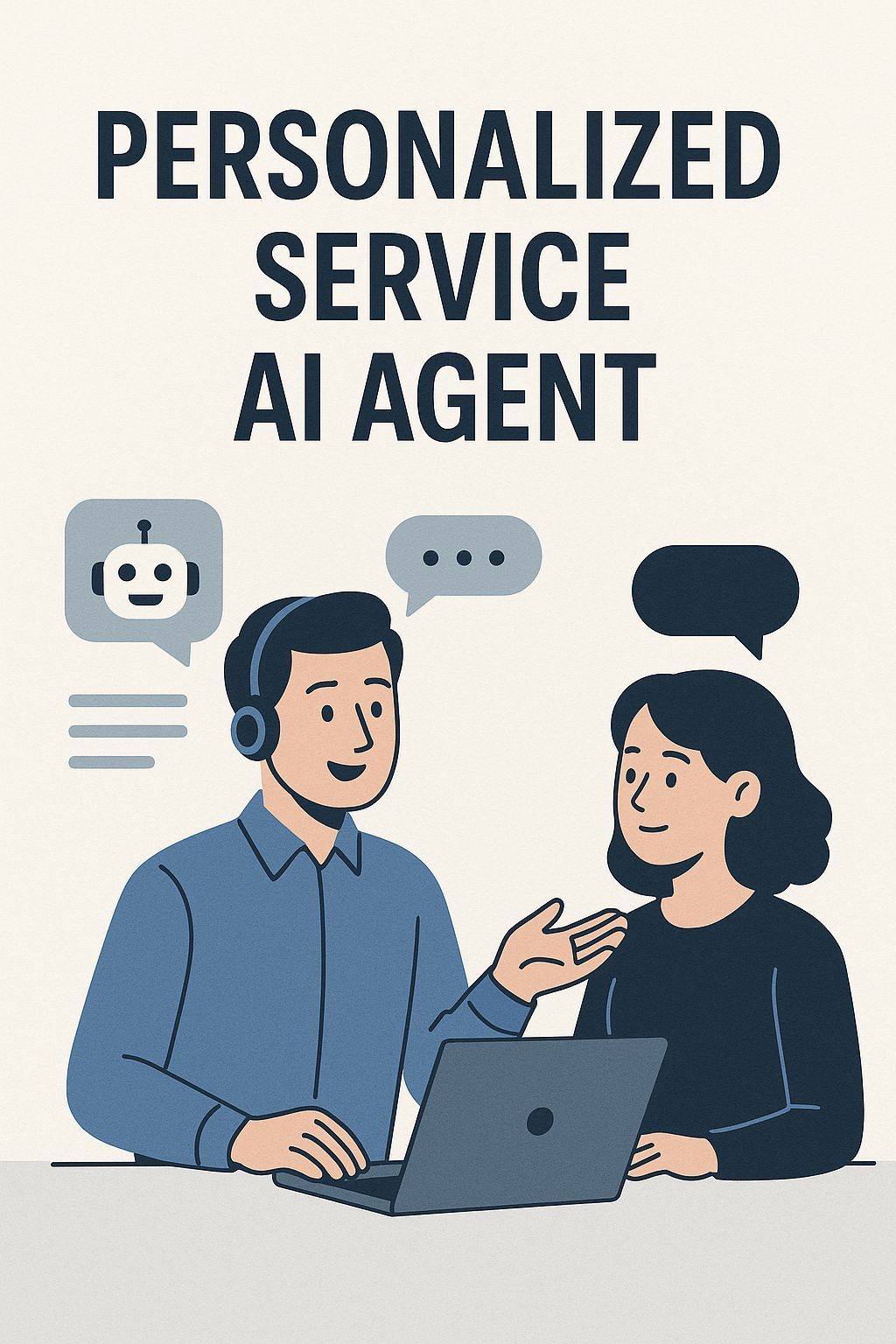

Orange County HVAC Google AI Overview Domination: 7 Proven Strategies to Capture Featured AI Results






